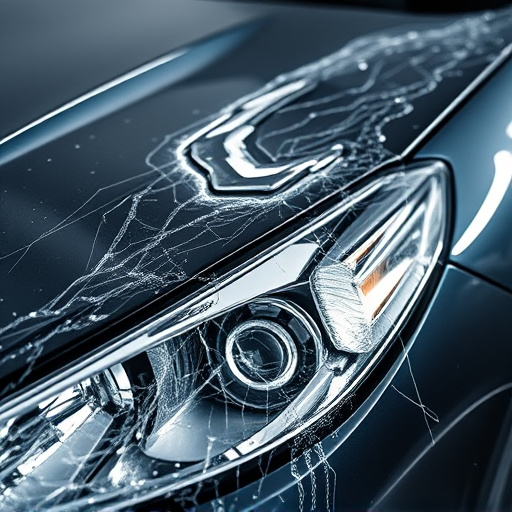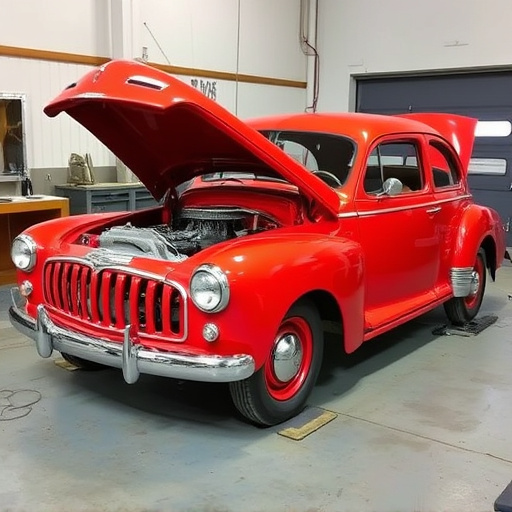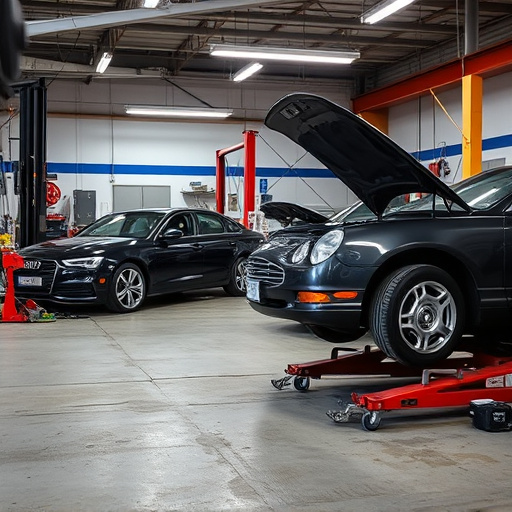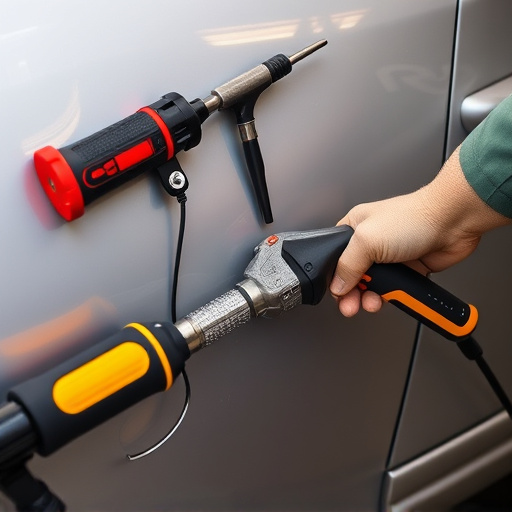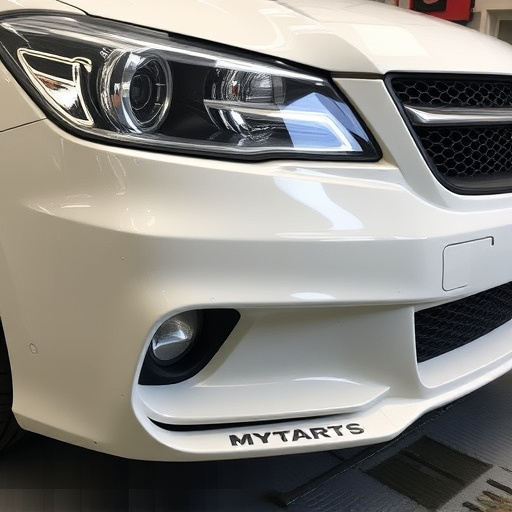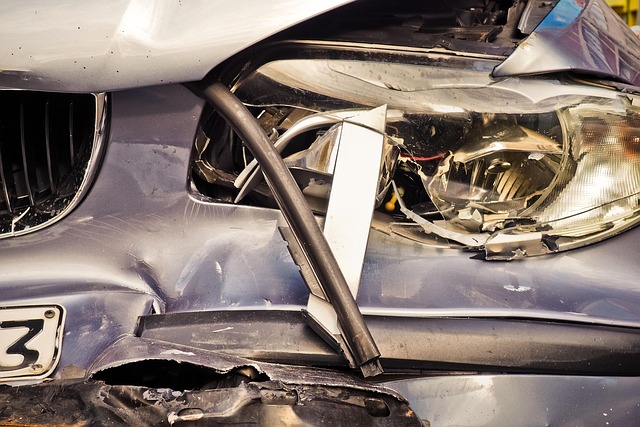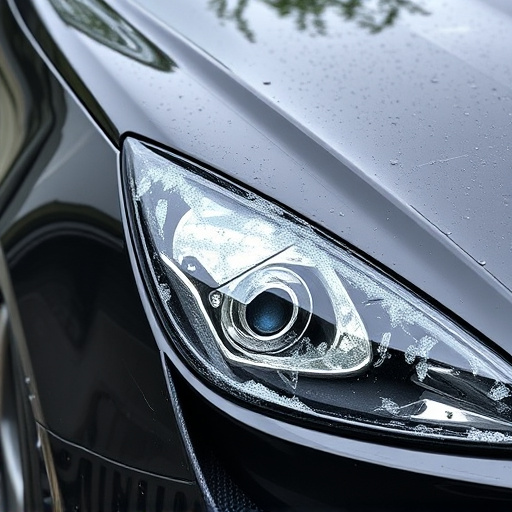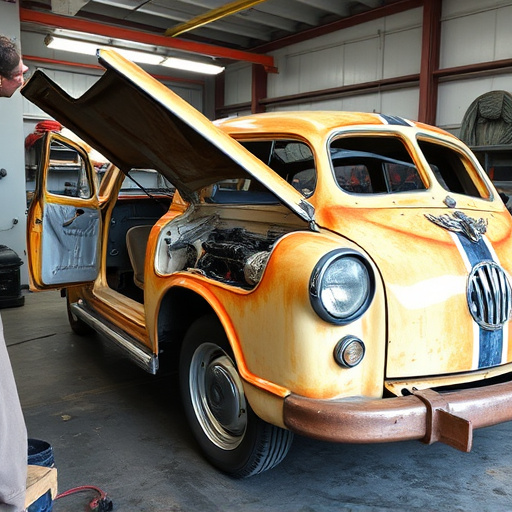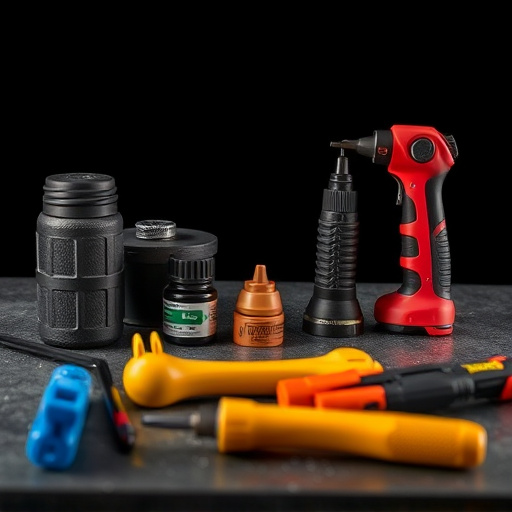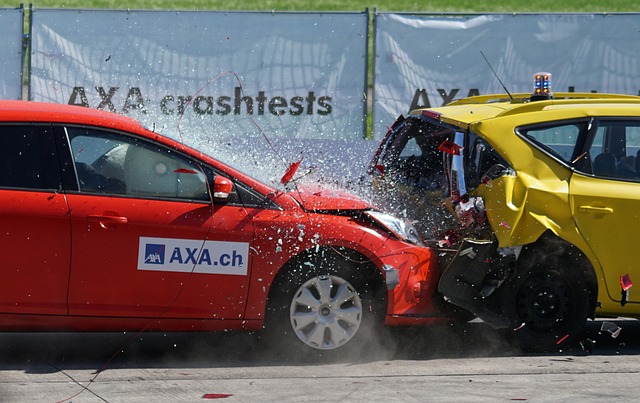Tesla's aluminum body construction revolutionizes automotive design with lightweight performance and efficiency. Specialized repair techniques for aluminum bodies, including robotic welding, CAD, and PDR, ensure structural integrity while restoring aesthetic appeal in bustling urban environments. Meticulous straightening processes address heat-related dents, preserving the vehicle's enhanced structural advantages through quality control checks.
Tesla’s innovative use of aluminum in their vehicle construction offers benefits in terms of lightweighting and strength. However, this unique body structure presents specific challenges during repairs, especially frame straightening. This article delves into the intricacies of Tesla aluminum body repair, exploring the distinct process of straightening frames, common issues encountered, and advanced techniques employed by professionals to preserve the structural integrity and aesthetics of these cutting-edge electric vehicles.
- Understanding Tesla Aluminum Body Structure
- The Process of Aluminum Frame Straightening
- Common Issues and Repair Techniques
Understanding Tesla Aluminum Body Structure

Tesla’s use of aluminum in their vehicle construction has revolutionized automotive design and engineering. The Tesla aluminum body structure is a key component that contributes to the lightweight nature of their cars, enhancing both performance and efficiency. This innovative approach to auto body repairs involves precise fabrication and intricate joining techniques to create a robust yet lightweight frame. By utilizing specialized tools and methods, such as robotic welding and computer-aided design (CAD), Tesla ensures consistent quality control during the manufacturing process.
Understanding the unique characteristics of aluminum is essential for anyone involved in Tesla aluminum body repair. Unlike traditional steel bodies, aluminum requires specific care to maintain its structural integrity. The metal’s ability to conduct heat makes it susceptible to dents and dings, which can compromise the vehicle’s overall strength. Therefore, automotive repair services focusing on Tesla models must employ advanced techniques like dent removal to restore the car’s original shape and performance. This meticulous attention to detail guarantees that the vehicle not only looks its best but also maintains its structural advantages.
The Process of Aluminum Frame Straightening
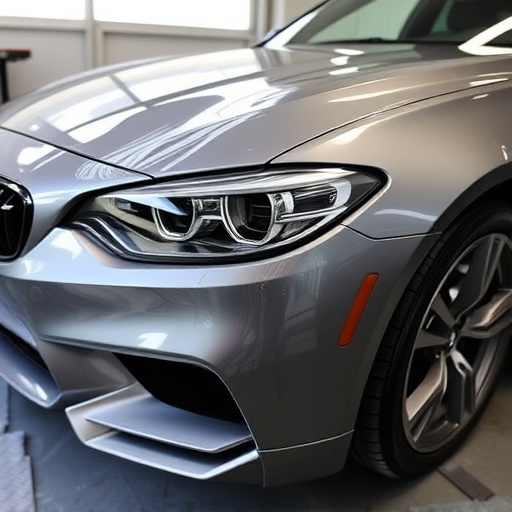
The process of straightening a Tesla’s aluminum frame involves careful techniques to ensure precision and structural integrity. It begins with assessing the damage, which could range from minor dents and scratches to more severe deformities. Skilled technicians use specialized tools to detect any misalignments or stress concentrations within the lightweight aluminum alloy. Once identified, the repair process can commence, employing methods tailored for this specific material.
Aluminum frame straightening requires a multi-step approach. It often starts with heating the affected area to temporarily soften the metal, allowing technicians to mold it back into its original shape. Advanced tools and equipment, such as hydraulic presses and specialized jigs, are utilized to apply uniform pressure, carefully realigning the frame. After straightening, the repaired section may undergo a series of quality checks, including visual inspections and advanced scanning technologies, to guarantee that the Tesla’s structural integrity is fully restored, making it ready for subsequent paintwork or other finishing touches in auto glass repair and scratch repair processes.
Common Issues and Repair Techniques
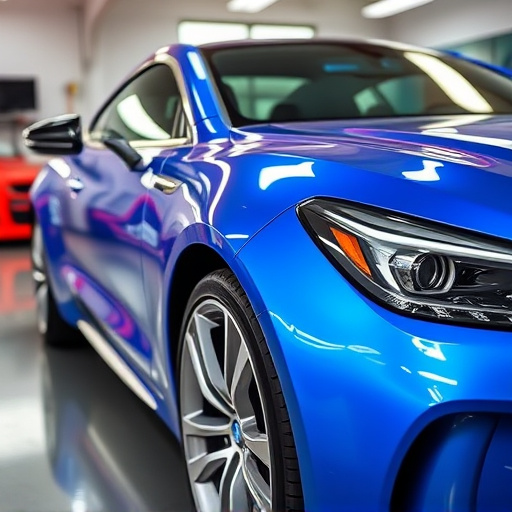
Tesla aluminum body repair is a specialized service that addresses common issues faced by owners of Tesla vehicles. One of the unique challenges with Tesla cars is their lightweight aluminum construction, which, while offering benefits in terms of performance and efficiency, can also be susceptible to damage. Dents, scratches, and other cosmetic imperfections are not uncommon, especially in bustling urban environments where parking spaces might be tight. These issues can range from minor bumps and scrapes to more significant frame straightening requirements after a collision.
The repair techniques employed for Tesla aluminum body work are designed to preserve the structural integrity of the vehicle while restoring its aesthetic appeal. Automotive body shops skilled in this area use advanced tools and methods, including computer-aided design (CAD) technology and specialized heating equipment, to carefully straighten frames and remove dents without compromising the metal’s strength. For smaller repairs, such as dent removal, a process known as PDR (Paintless Dent Repair) is often utilized, which involves using special tools to push out the damaged area from the inside, leaving no trace of the former imperfection. This approach not only saves time and money but also contributes to the car’s overall longevity by minimizing the need for extensive paintwork.
Tesla’s innovative use of aluminum in its vehicle construction presents unique challenges for repairs, but also offers precise and efficient opportunities. Understanding the specific characteristics of Tesla aluminum bodies and frames is key to effective repair and straightening techniques. By employing specialized tools and knowledgeable technicians, common issues can be successfully addressed, ensuring structural integrity and maintaining the sleek design aesthetic that Tesla vehicles are renowned for. For those specializing in Tesla aluminum body repair, staying informed about the latest advancements in materials science and repair technology is essential to provide top-tier service.

